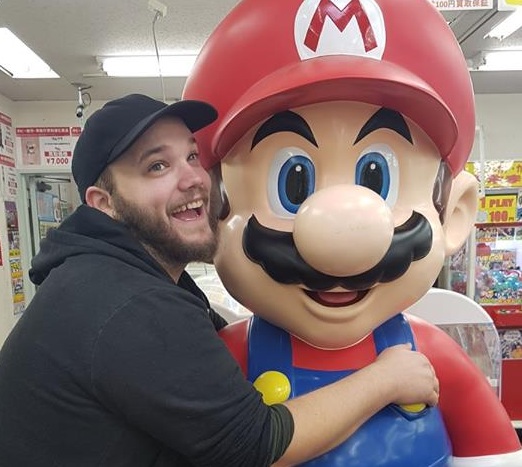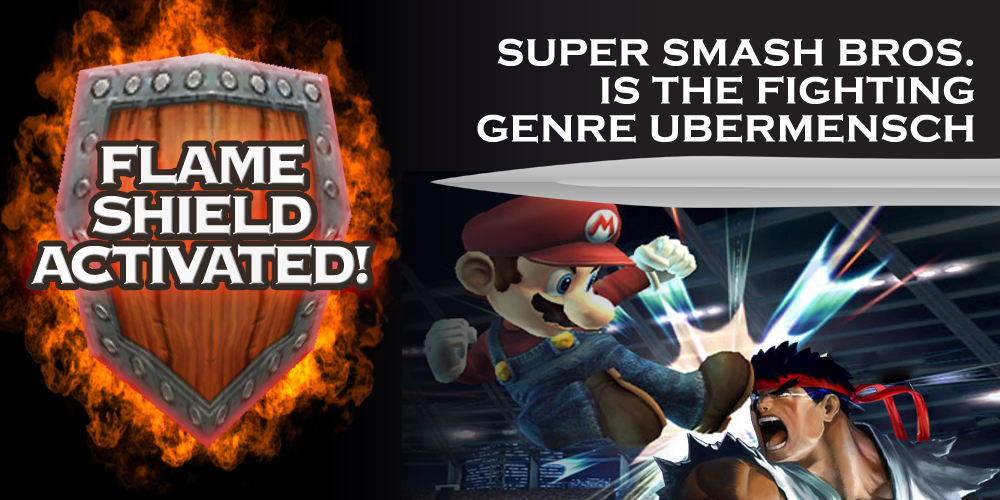
Editor Note: Flame Shield Activated! is a safe space to share opinions on disagreeable topics. The views expressed are those solely of the writer, and we do this with the knowledge that the internet will likely disagree with our findings.
I played a lot of fighting games as a kid. I wasn’t a huge fan of the genre necessarily, it just worked out that way. When you’re a kid and have no money of your own, you’ll play just about any game you can get your hands on. Most fighting games, as many will know, can be pretty involved, with the learning curve becoming more of a sheer cliff face in some titles. Many fans of the genre would probably dismiss this as “easy to learn, difficult to master.” It’s a sentiment I have to disagree with, however, when players are required to have rain-man levels of recollection to be able to use special moves. Not to mention that most fighting game recommendations come with the caveat of “There are heaps of guides online to help.”
Well, sod all that, because Smash Bros. don’t need none of it and it’s still the best fighting game around, hands down, bar none.
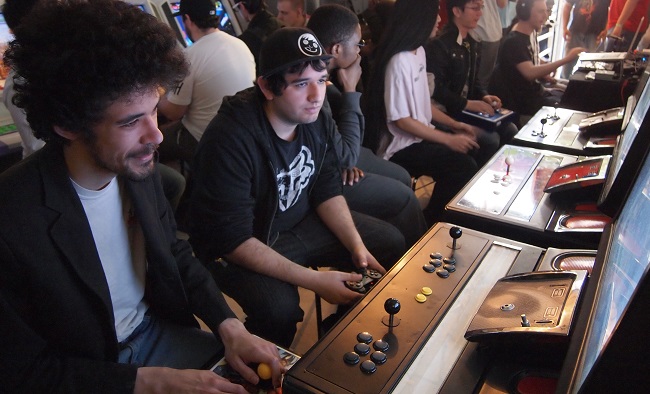
That’s right, I said it – come at me with your arthritic wrists, fighter fans!
Why do I have so much love for Smash? It could be because of the Nintendo fanboy that’s been slavering away inside of me all these years, forcing me to pursue something I hate – the fighting game genre – against my better judgement. Maybe it’s because I picked up the first Smash game as a child and have literally grown up with the series. Or maybe, just maybe, it’s because whatever other fighting games can claim to do, Smash can do it better. Yeah, look, I’m saying some pretty inflammatory stuff here, but it isn’t without merit. First I’m going to touch on why I personally think that Smash Bros. is better than all other fighting games; then I’m going to blow your mind with facts. So, why am I opening the floodgates to hate mail? Well, first of all…
Did you know that fighting games have storylines? I don’t mean stuff like Injustice, where the entire game is based on pre-existing rivalries and relationships from an existing franchise. I’m talking about Tekken and Street Fighter and… Even this thing, whatever it is. It seems obvious, like, of course, there’d be some kind of story involved when there’s such a varied and unique cast of characters. You’d be forgiven for not having picked up on these stories, however, since they’ve never been particularly apparent outside of the garbled soundbites which characters mutter between fights. The story rarely comes through in the gameplay and, unless you go out of your way to find it, anything story related which appears on the screen is only going to confuse and enrage.
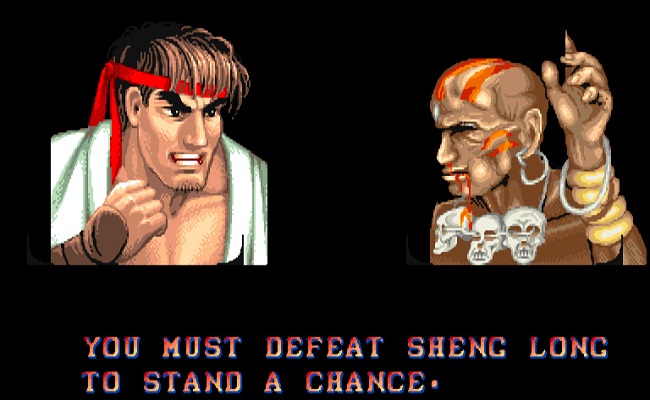
Sheng Long? Who is he!? TELL ME YOUR SECRETS RYU!!
The trouble is this: fighting game characters are made for fighting games and not much besides. Sounds obvious, right? But it’s also why the question “Who would win in a fight?” just doesn’t have the same impact when asked about other fighting game characters. It’s because that question is usually followed up by “Wouldn’t it be cool if they could, though?” Well, in fighting games they can and often do, with crossover games like Marvel VS Campcom, or Campcom VS SNK, even getting their own recurring series. A lotta Capcom. These games come close to the “Who would win in a fight?” feeling of wish-fulfillment, but they never really quite manage to capture its true essence. Sure, the right characters are there and, if you’re lucky, you’ll even get a stage or two which resembles something from their respective universes. There’s no denying that there’s something else that’s missing, however, and I’ll use the Marvel vs. Capcom series as an example.
The Marvel vs. Capcom games, as the name suggests, pits characters from Capcom’s fighting games against characters from the Marvel Comic-book Universe. Having these two totally disconnected worlds clash serves the idea of “Who would win?” well, but half the fun of those arguments is the constant one-upmanship of “Yeah, but what if..?” The stages that are available for play in MvC look pretty, but they don’t really do much to effect the battle. Likewise, without some kind of weapon unlocks, you’re limited to the signature weapon(s) of your chosen character; no room for improvisation. The Marvel VS Campcom games have the right intention for fantasy fulfillment, they just haven’t quite worked out how to do it.
Smash Bros., on the other hand, reaches into the collective Nintendo-core fan consciousness, roots around with reckless abandon and starts yanking every “What if?” scenario it can get its hands on. It probably does it with a literal hand. Probably this hand:
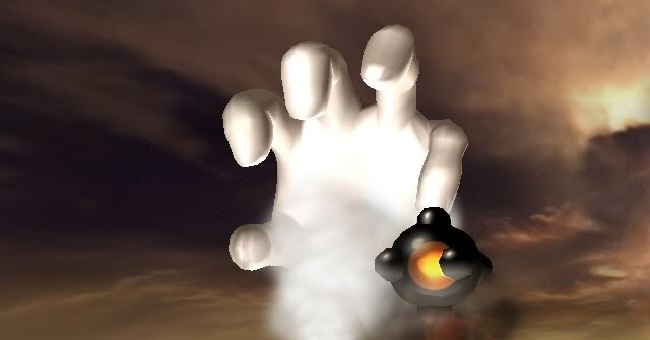
It’s clinically something alright.
The stages are usually interactive, taking prominent levels, characters, and moments from the various game-sakes of the fighters and, sometimes literally, flinging them at fighters’ faces. There’s also items that can be used in-game, usually taken from the rostered characters respective game worlds, to help sway the battle in your favor. If you don’t want either of these things, you can turn off the items and play on the “Battlefield” level for a more classic fighting game feel. You can play on Battlefield and leave the items on if you want to. For those delusional enough to believe that it would make a difference, you can even play Battlefield versions of other levels as of the latest Smash game.
Consider as well the familiarity that fans of Nintendo will have of these various characters and the wealth of history that each of them carries. A good deal of them have absolutely no business even being in a fight, which makes their inclusion all the more entertaining. Could Little Mac beat Fox in a fight? What if it was in space? With Lasers? Make no mistake, I’m not saying that Smash does a better job of catering to everyone’s level of fantasy fulfillment. I did say this was a personal point, after all, and Smash is very much geared towards established fans of Nintendo. That being said, it still has all the right elements: Beloved characters, bitter rivalries, old alliances, home field advantages, extended arsenals, and variability all over the place. Smash Bros. is the very essence of “Who would win?” and does fantasy fulfillment better than any other fighting game out there.

Let’s invite Donkey Kong, Pikachu, Yoshi and Kirby to beat the piss out of each other in some weird kids neighborhood. Throw in some vehicular homicide for good measure.
Can you push a thumbstick in any one direction while pressing a single button at the same time? Congratulations, you’ve just learned the entire move set of every character in every Super Smash Bros. game to date. I can’t stress how important this one feature is to the whole series. It means that whenever you pick up another character you’ll spend time learning the character and not have to waste time learning their move set. One of the major turn-offs to most newcomers when it comes to fighting games is the ridiculous entry barrier in the form of learning how to control just a single character. Smash Bros. teaches you how to control every character in the first fight you play, regardless of which one you choose.
The other side of any fighting game is learning the meta-game behind it, learning how to read other players and use the technical play of the game to your advantage. There’s no shortage of different techniques in fighting games (and the technical terms to describe them). In all reality, the number of techniques to bulk out the technical play in most fighting games is probably higher on average than there are in Smash. At the top level of fighting games, most matches look pretty damn graceful, as well, like they could be actual fights if magic were a real thing. This is the final match of the 2014 EVO tournament for Ultra Street Fighter 4 and you’ll notice that there isn’t a single second where these players aren’t executing some part of a grander strategy.

A strategy of punches! A plan of kicks! Also magic explosions, sometimes, that happens too.
For the casual observer, it will appear that these guys are just going absolutely spastic on their controllers. There is actually an enormous amount of thought which goes into how these characters are played, however. I even guarantee that some of the damage taken by each player was deliberate and calculated on the part of the receiver. Probably some of those missed hits too, as this all helps to build your special meter. It’s spectacular to watch for anyone who isn’t familiar with the technical play of Street Fighter and it’s really engaging for fans of the series. It would be in this area, at this level of competition, that the “hard to master” sentiment really shines through. In comparison, here is the final match of the 2014 EVO tournament for Super Smash Bros. Melee.
If Ultra Street Fighter top-tier players looked like they were just mashing on their controllers, these guys are probably chewing theirs. The combos, the counters, the dodges and feints, ledge guarding, L-cancelling, all of it happening at a ridiculous speed. All Smash Bros. games, even the one back on the 64, ran at 60FPS. Spans as short as 11 frames can be, and often are exploited by experienced players for an advantage during a fight. The mechanics of the game also mean that you’re not just moving back and forth, you have to fully utilise an entire, usually-multi-tiered level in order to succeed. Consider also that characters don’t have a life bar, as a standard, but have to be knocked off the stage in order for their opponent to score. Smash is easily the most difficult game to master in the fighting genre.
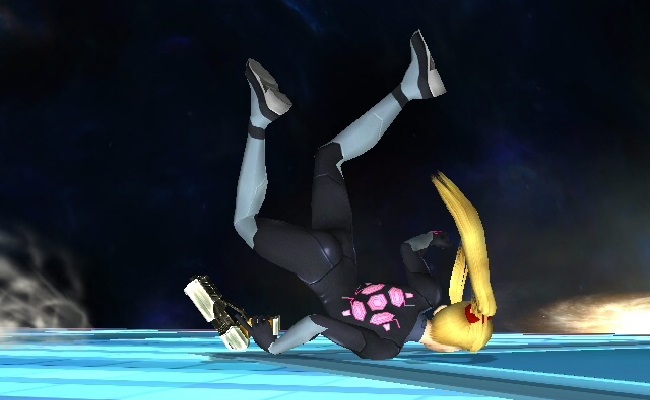
Especially when someone decides this is a good idea.
Call of Duty is a series that I’m not particularly fond of and still feel dirty for whenever I find myself doing something shocking, like enjoying my time with CoD: Kevin Spacey. When the series first hit its stride, I couldn’t fathom how this apparently awful and inferior shooter was excelling in areas that none in its genre ever had before. When I eventually pulled my head out of my own ass, I realised that the series’ success wasn’t some unusual anomaly that happened despite widespread hatred for it. The series is immensely popular, enough to have launched it to the status of the best selling game franchise of all time. Gamers tend to vote with their wallets, especially when it comes to recurring franchises, and (like it or not) game sales are the best indicator of a games overall popularity.
With that in mind, let’s take a look at the sales records of some of the most well-known fighting games in the genre. Mortal Kombat, there’s a classic series, 32(ish, some of those are beat ’em ups and brawlers) titles in the series lifetime and 33.73m copies sold globally in that time. Its highest selling game was the Mortal Kombat Trilogy (1996) with 2.79m. Street Fighter, one of the most iconic fighting games in gaming history, selling 32.1m across 35 titles and that includes all the “This Years DLC/Re-release” versions. Its most successful title was Street Fighter II: The World Warrior (1992) which sold 6.3m copies. We all noticing a trend here? Let’s keep going. Tekken – 40.66m copies sold over 22 games, including crossovers, with the “best” of those being Tekken 3 (1998) with 7.16m.
Super Smash Bros. has had but five games in its entire lifespan, which have sold 32.1m copies combined and the most successful of these was Brawl (2008). Completely outstripping the best-selling titles of other franchises in its genre, Brawl sold a whopping 12.42m copies worldwide and kept selling as late as last year. Brawl.
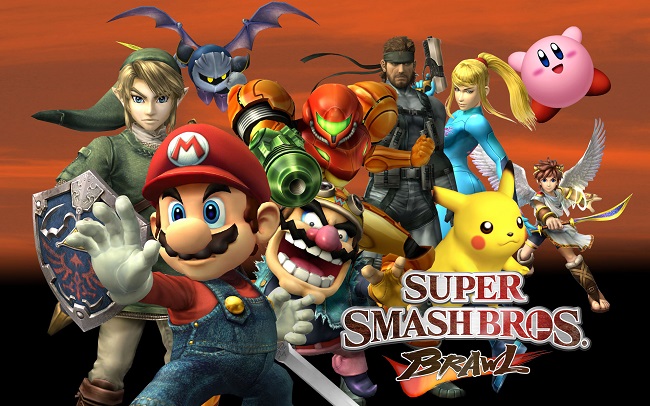
Brawl.
The EVO Championship Series is a fighting game tournament held several times a year for what the competitive community would call the best fighting games. Those guys are still playing Super Smash Bros. Melee, a personal favorite of my own as anyone who’s read my diatribes before will know. These guys are top-tier fighting genre players and they still rock out on Melee every year, recognising it as the pinnacle of Smash perfection that it is. That EVO, a tournament for the best fighting game players in the world, still plays Smash Bros. should at least be an indication of its greatness in the genre. It’s for every other reason I’ve given here today that you should believe it to be the best.
Now I’m sure that even after my compelling arguments there will probably still be a few people out there reading and thinking I’m talking nothing but dreck. “Well, of course he’s going to say all that about Smash Bros.,” I hear you say, in this internal conversation I’m having, “that game is a gaming community darling and there’s never been a “bad” Smash game.” Well, no – Brawl, the most successfully sold title in the series, was actually considered to be pretty awful by the competitive community. It just isn’t as good for competitive play as its predecessor was. Despite that, however, Brawl is likely the best example of a Smash game, which should now be synonymous with “best” for you. Its got the fantasy fulfillment, it has easy-to-learn-difficult-to-master gameplay and, from its numbers, it has the best of both from the whole series. Why, you might even say that Super Smash Bros. Brawl is the greatest fighting game ever made!


